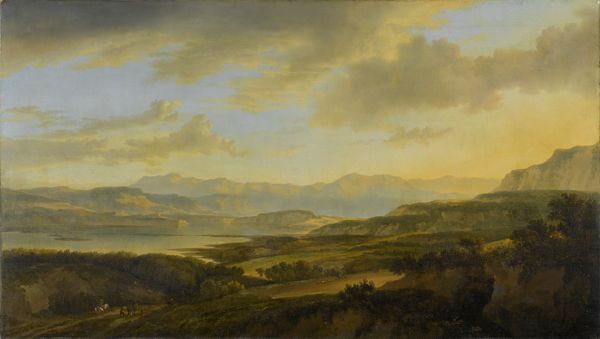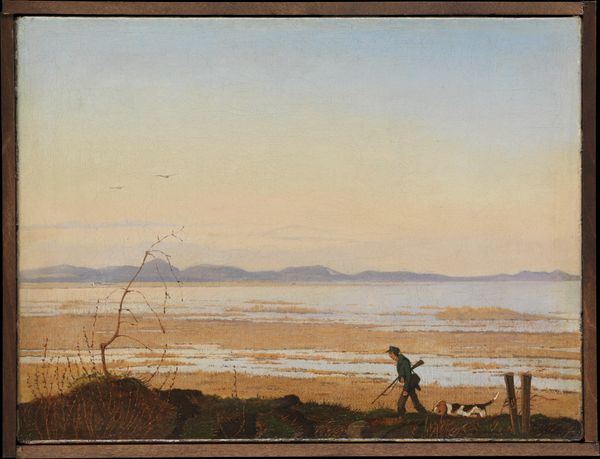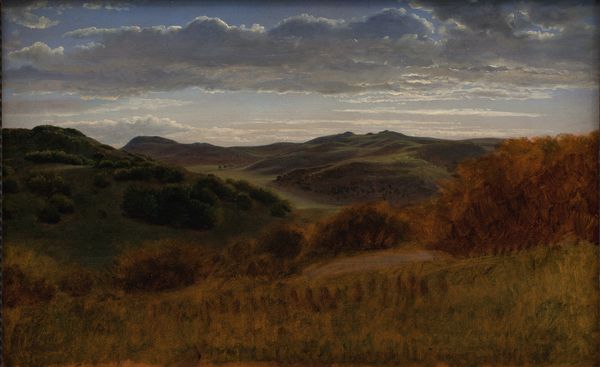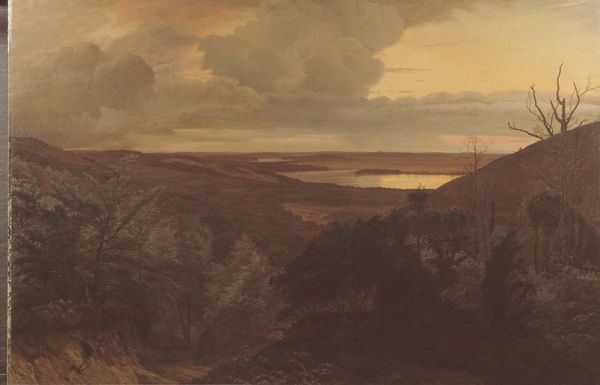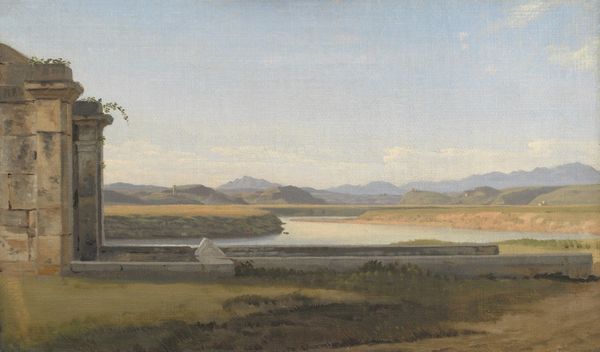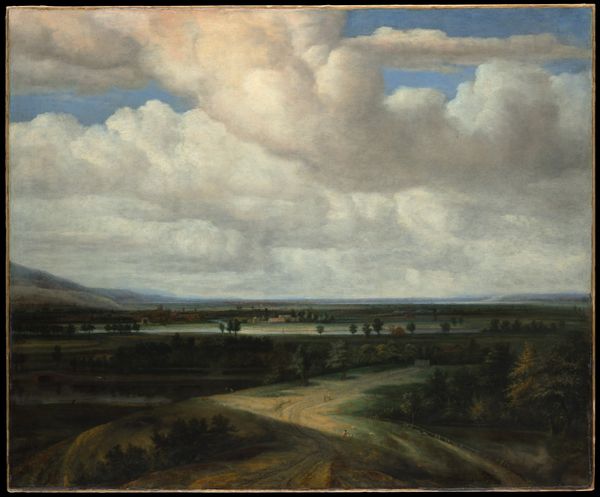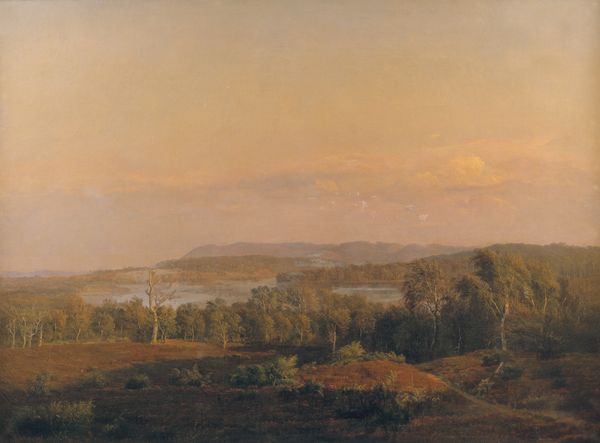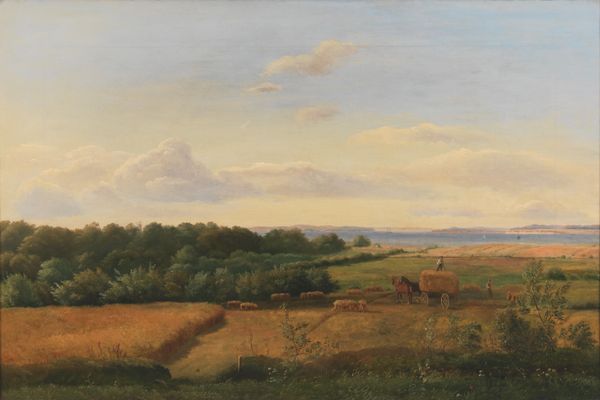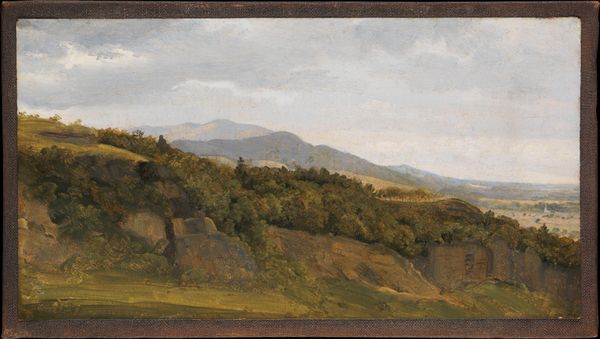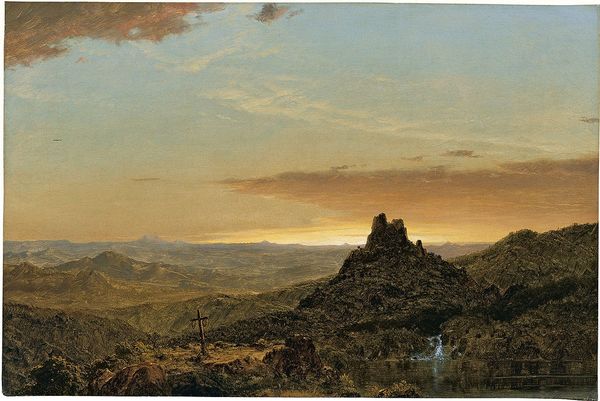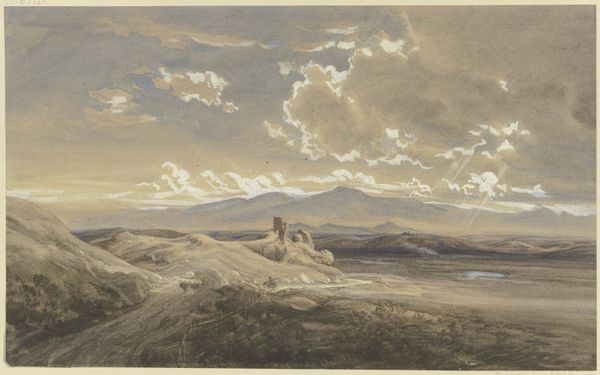
Dimensions: 36 x 46 5/8 in. (91.44 x 118.43 cm)35 1/4 x 46 1/4 in. (89.54 x 117.48 cm) (sight)51 1/2 x 62 x 6 1/4 in. (130.81 x 157.48 x 15.88 cm) (outer frame)
Copyright: Public Domain
Theodore Rousseau created this painting of 'View of Mont Blanc' with oil on canvas. Initially, the eye is drawn to the expansive horizontal composition, divided into distinct layers. The dark, textured foreground gives way to a vibrant green valley, bisected by a body of water, and culminating in the distant, snow-capped Mont Blanc. Rousseau masterfully uses aerial perspective; the colors fade and lines soften, creating a sense of depth and distance. The structure of the painting offers a contrast between the detailed, almost Romantic foreground and the more subdued, Realist background. Note how Rousseau uses the foreground not just as a visual anchor but also as a commentary on nature. It acts as a signifier of nature’s untamed beauty versus the more idealized or sublime representations of landscape art. The composition's effectiveness lies in its ability to invite ongoing interpretation; each viewer may find a unique point of entry and connection within this structured panorama.
Comments
minneapolisinstituteofart about 2 years ago
⋮
ViView of Mont Blanc, Seen from La Faucille is one of Théodore Rousseau's most important late works, on which he worked assiduously for four years, and which he finally exhibited publicly at the Paris Salon of 1867. However, until very recently its significance and its location at the MIA were completely overlooked. The picture demonstrates the importance that Rousseau ascribed to panoramic mountain views. The subject's iconographic interest resided also in the fact that ownership of the Savoy region reverted to France, after fifty years, only in 1861 (two years before Rousseau's second Alpine visit) when a treaty signed by France and Italy established the boundary between those countries as passing directly through the summit of Mont Blanc. In addition to this topical iconographic interest, the painting's remarkable light effects and its complex proto-pointillist facture, which confused most critics at the time, evidence an experimental technique that was both unorthodox and prescient. Conservation of this picture was made possible by a generous contribution from Douglas and Mary Olson and Al and Dena Naylor through the Art Champions program. This French Neoclassical revival salon frame—contemporary with the painting —is Gift of the Douglas and Mary Olson Frame Acquisition Fund.
Join the conversation
Join millions of artists and users on Artera today and experience the ultimate creative platform.
